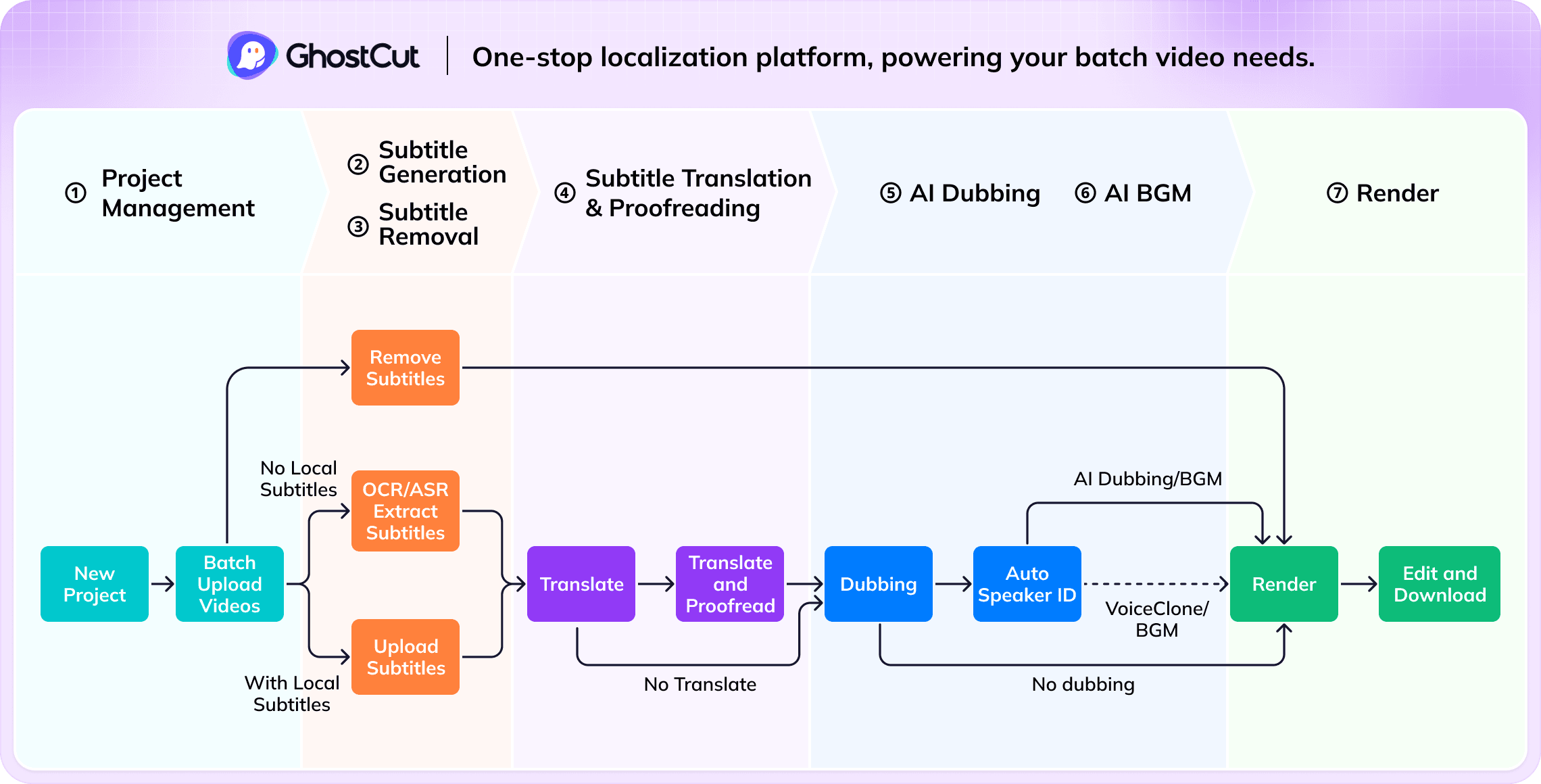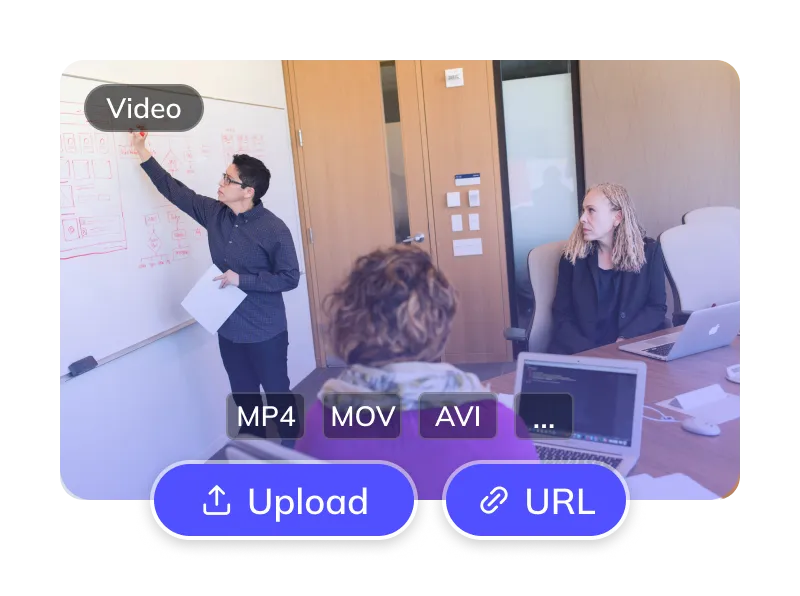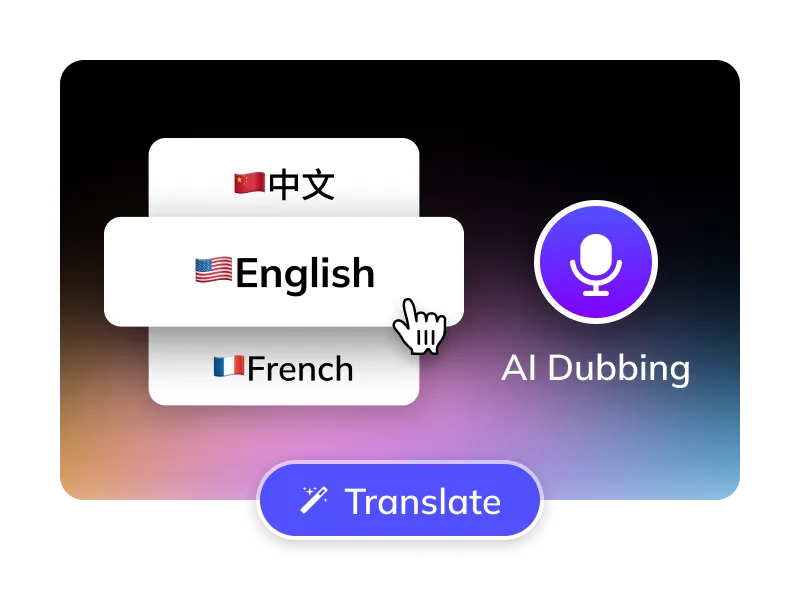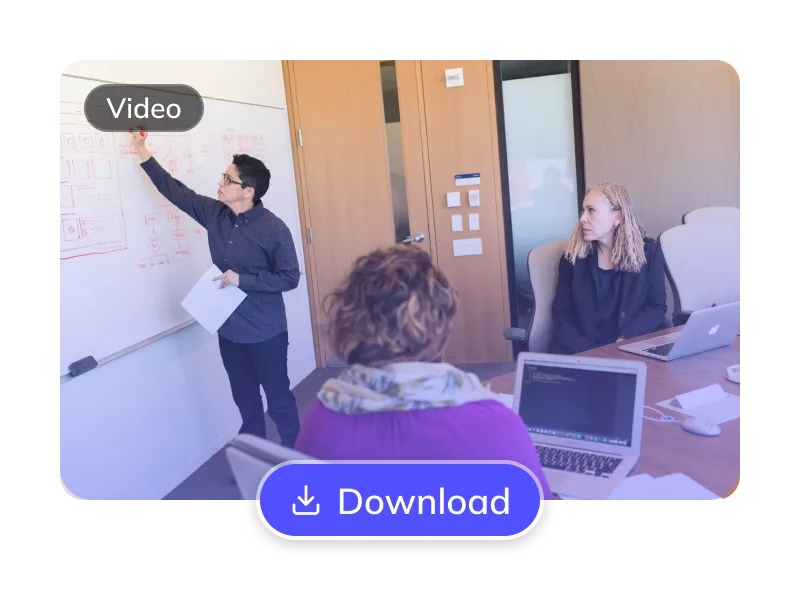How to Translate Turkish Videos to English ?
Translate Turkish Videos to Traditional-Chinese in 3 Easy Steps
Trusted by 1,500,000+ Global Creators and Businesses
Why GhostCut for Your Video Translations?
GhostCut is your all-in-one AI solution for translating Turkish content into natural, engaging Traditional-Chinese.
Effortless Project Management
Manage Turkish assets, subtitles, & Traditional-Chinese videos. Batch process projects efficiently.
Pinpoint Traditional-Chinese Accuracy
Up to 99.5% accurate. Optimized for Turkish-to-Traditional-Chinese with LLM calibration & multi-agent review for culturally fluent Traditional-Chinese translations.
Lifelike Traditional-Chinese AI Dubbing
Choose from diverse, human-like Traditional-Chinese AI voices (US/UK accents). Emotion-cloning technology captures original tone for natural Traditional-Chinese delivery.
Flexible Turkish Subtitle Options
Optionally erase original Turkish hardsubs for a clean slate. Translate embedded Turkish subtitles directly.
Smart Multi-Speaker ID (Turkish)
AI detects multiple speakers in Turkish videos. Assign or clone distinct Traditional-Chinese voices per character, with cross-episode consistency for complex Traditional-Chinese dubs (dramas, interviews).
Efficient Batch Processing & API
Batch translate and dub 100s of Turkish videos to Traditional-Chinese at once. Seamlessly integrate with our robust API.
Versatile BGM Control
Keep or mute original BGM. Our unique tech can also isolate sound effects, meeting diverse copyright and distribution needs.
Unbeatable Value
Flexible Turkish-to-Traditional-Chinese plans. Try core features free. Automated pro service from just $0.1/minute.
Easy Online Access
No downloads. Instantly translate Turkish videos to Traditional-Chinese online. Works on Windows, Mac, & major mobile browsers for cloud processing anywhere.
The GhostCut Edge: Unmatched Accuracy, Speed, and Value.
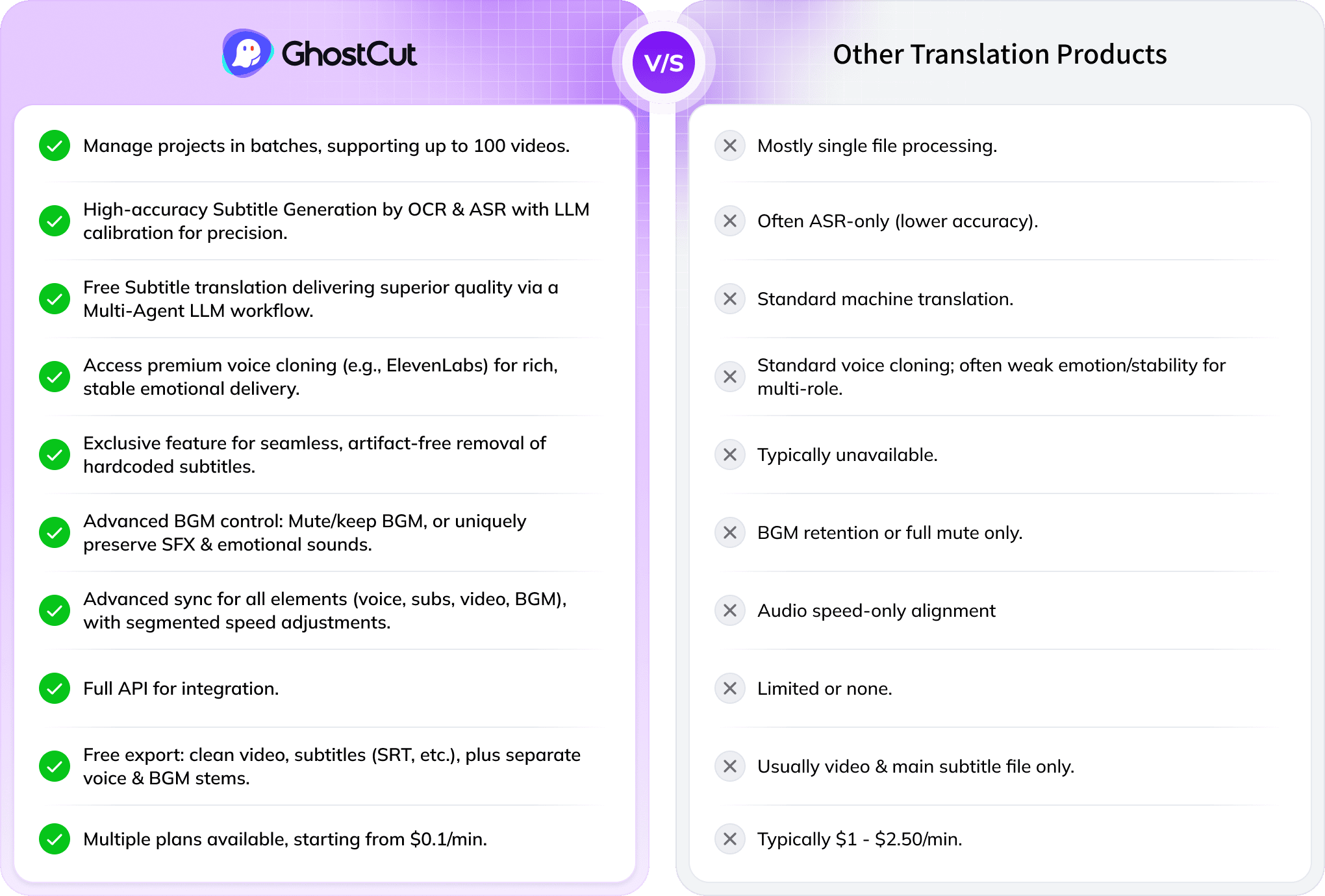
Every Algorithmic Optimization, Engineered for Quality Traditional-Chinese Video
Mastering Long-Form Turkish Drama & Multi-Character Dubbing
Translating a 100-minute Turkish drama with 4000+ lines and many characters into Traditional-Chinese is tough. Standard AI struggles to tell speakers apart, causing errors. GhostCut’s multi-modal AI (video, voice, text) excels in long-form, multi-speaker content, ensuring accurate, consistent character voices across entire series.
Translate Now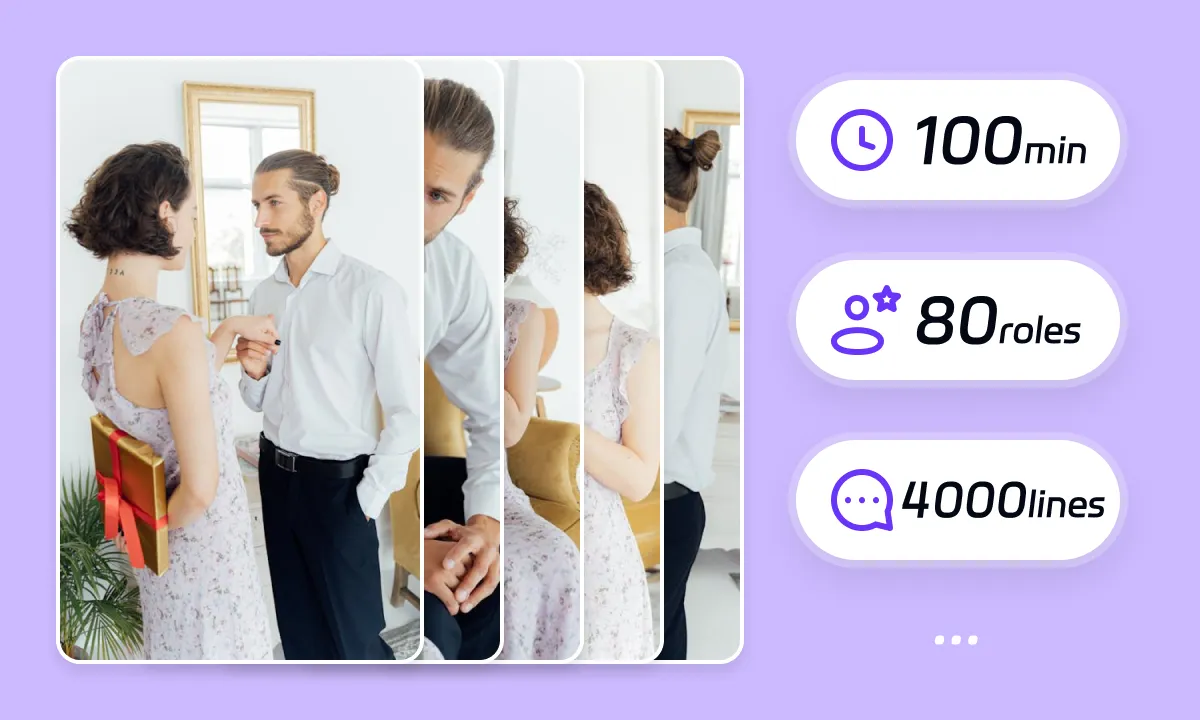
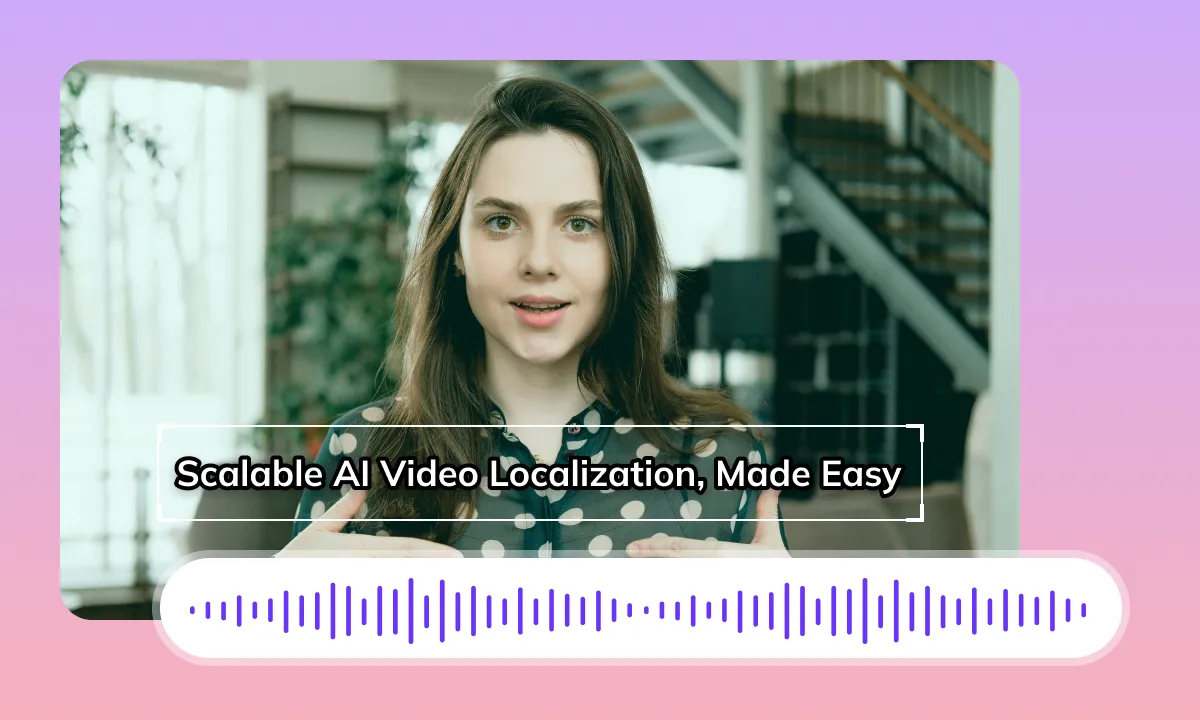
Seamless Traditional-Chinese Dubbing & Perfect Lip-Sync
GhostCut ensures natural Traditional-Chinese audio flow by treating related subtitles as whole ideas for TTS. It then precisely times new Traditional-Chinese subtitles. Since Turkish-to-Traditional-Chinese translation can change speech length, our AI expertly adjusts the new Traditional-Chinese audio, subtitles, video, and BGM to maintain perfect sync, just like a seasoned editor.
Translate NowBoost ROI with Flawless Turkish Subtitle Removal
Original Turkish hardsubs can limit your video's global appeal. GhostCut’s AI doesn't just blur; it intelligently reconstructs the background obscured by Turkish subtitles, even complex ones, for a perfectly clean, high-quality visual. This means better viewer engagement, longer watch times, and higher ROI.
Translate Now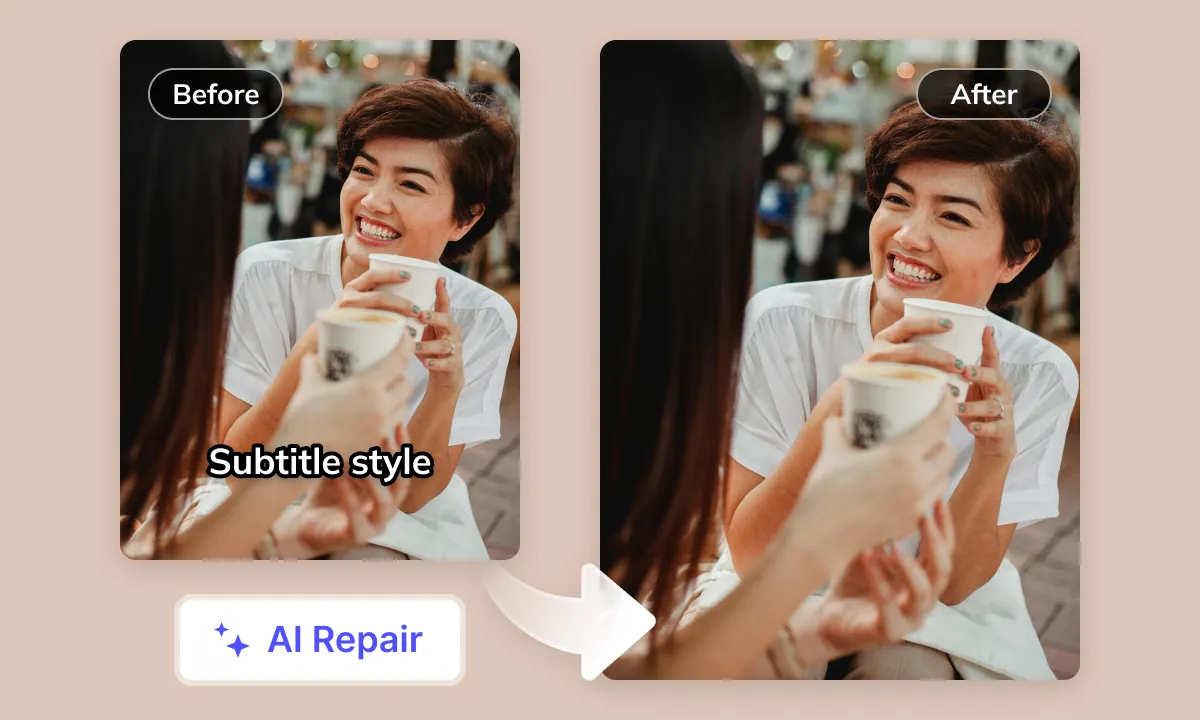
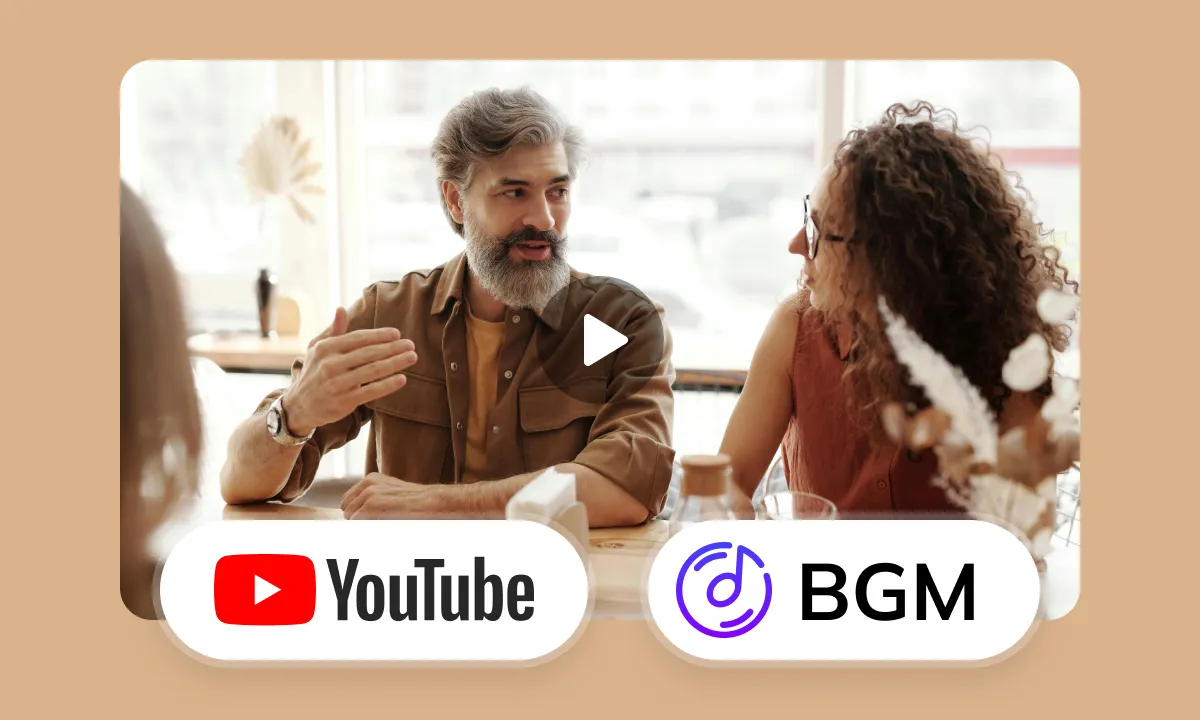
Smart Audio Control for YouTube Creators
Navigating BGM copyright on YouTube is tricky. GhostCut’s advanced audio separation isolates Turkish dialogue for translation, while intelligently managing BGM, sound effects, and even emotional expressions. Our "Keep SFX, Remove Music" option is a creator favorite for avoiding copyright issues without losing your video’s impact.
Translate NowYour Turkish Content Deserves to Be Seen by Traditional Chinese Audiences
High-quality Turkish videos (dramas, documentaries, vlogs) often struggle to reach Traditional Chinese audiences due to the language barrier. Many lack good Turkish-to-Traditional Chinese translation and dubbing on global platforms. This hinders viewer understanding, limiting reach and cultural exchange. Thus, a professional Turkish-to-Traditional Chinese AI translationdubbing solution is urgently needed
Turkish Video Translation to Traditional Chinese: Challenges and Considerations
Interference from Embedded Content
Turkish videos often contain hardcoded subtitles or on-screen text in Turkish. If not handled properly, this embedded content can conflict with the translated Traditional Chinese content, disrupting viewing fluency
Significant Linguistic Cultural Differences
Turkish, an agglutinative language, has vastly different sentence structures, word order, and vocabulary formation compared to Traditional Chinese, an analytic language. A core challenge is accurately and vividly conveying the original meaning while bridging cultural gaps, considering Turkey's unique history, religion, and customs, when translating into Traditional Chinese
Alphabet vs. Hanzi Layout Discrepancies
Turkish subtitles use the Latin alphabet, while Traditional Chinese uses square Hanzi characters. When converting Turkish content to Traditional Chinese subtitles, it's crucial to consider Hanzi visual density, line width limitations, and proper sentence breaks to ensure readability and prevent information overload
Pacing Information Synchronization
After translating Turkish content into Traditional Chinese text or voiceover, a significant challenge involves synchronizing the duration of the translated content with the original video's speaker's pace and scene transition rhythm. This requires both technical solutions and human collaboration
Turkish AI Recognition Accuracy
Various Turkish accents, complex background noise, and overlapping dialogue significantly impact the accuracy of AI speech-to-text transcription for Turkish. This can introduce source errors that propagate into subsequent translation stages
Lack of High-Quality TC AI Voices
While Traditional Chinese AI voiceover options exist, finding high-quality AI voices that are emotionally rich, natural-sounding, and capable of matching diverse video styles and character emotions remains challenging. This can result in robotic or unexpressive audio
Lip-Sync Difficulty
Turkish and Traditional Chinese have significant differences in mouth movements for pronunciation. Achieving a high degree of synchronization between the Traditional Chinese voiceover audio and the original video's speaker's lip movements is a highly demanding technical and adjustment task
Ideal AI Translation Workflow Standards
An ideal AI video translation process should achieve: high-accuracy Turkish speech recognition - accurate and culturally appropriate Traditional Chinese translation - high-quality Traditional Chinese AI voiceover (considering both voice tone and lip-sync) - intelligent timeline matching and visual alignment
Tackling Video Translation Challenges with AI Empowering your Turkish content for any worldwide scenario.
Your All-in-One AI Translation Studio
GhostCut offers more than just Turkish-to-Traditional-Chinese translation. It's a complete AI-powered workflow: subtitle extraction 、 removal 、 translation and proofreading to multi-character dubbing , BGM processing, and final rendering. Go from Turkish source to global-ready videos, effortlessly.
